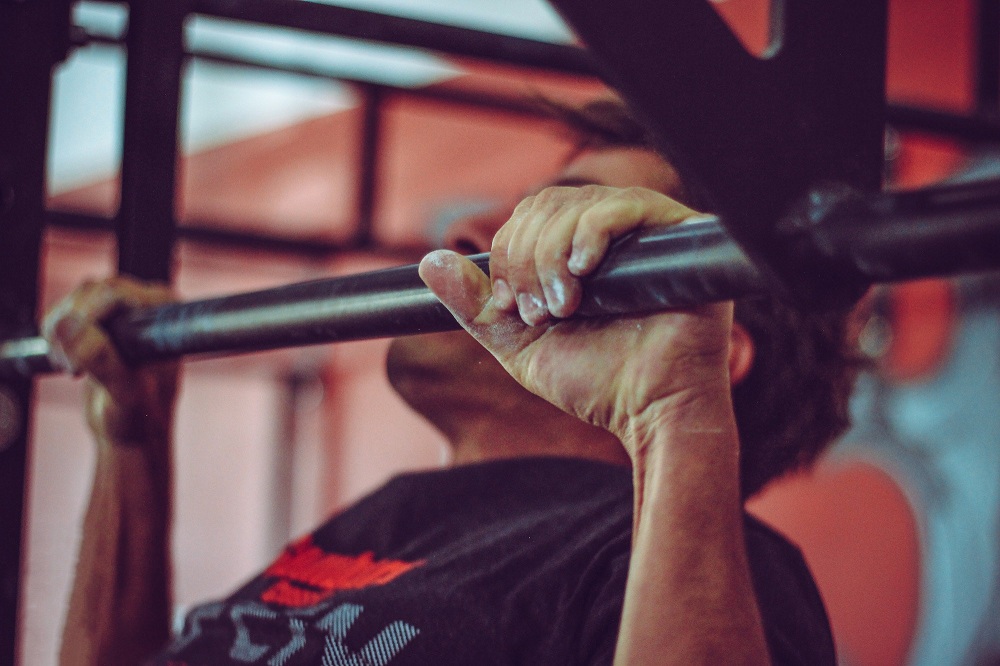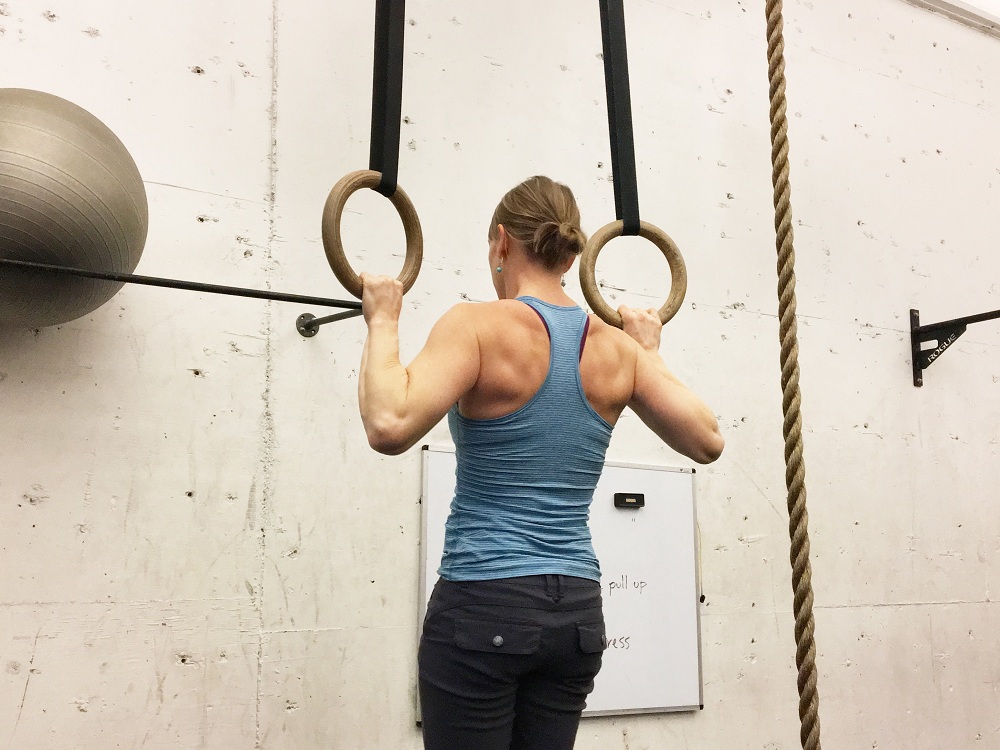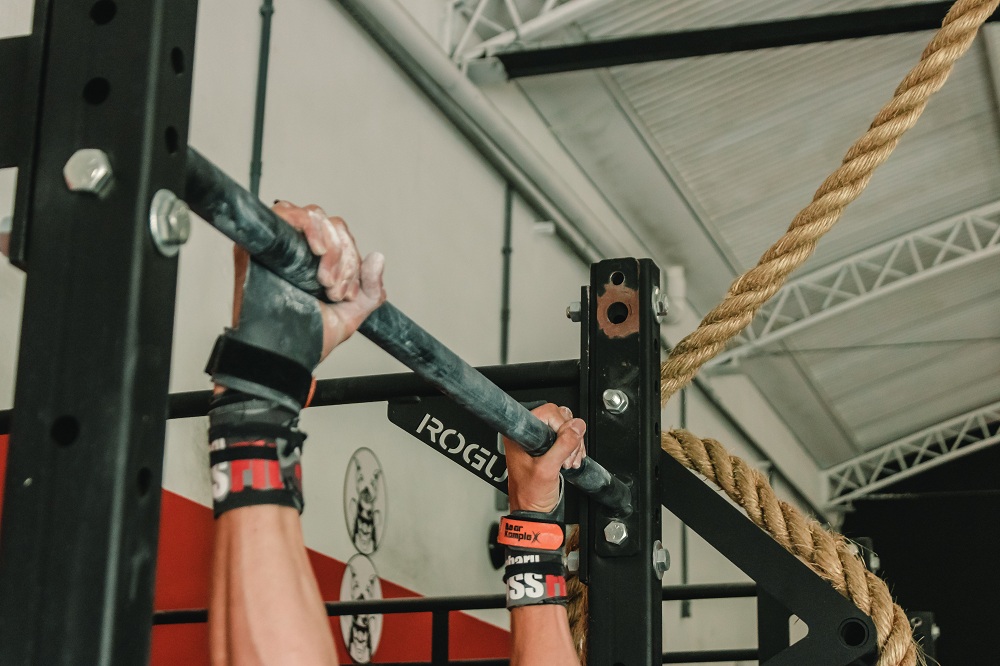Many believe (as I once used to) that pull ups are one of the most difficult, if not almost impossible, exercises to master. The idea of lifting up your entire bodyweight, and being able to do it over and over again, does appear daunting. You are going against gravity here, and it hurts! But the pull-up benefits far outweigh the initial inconvenience.

I personally hated pull ups, mainly because I thought I couldn’t do them. I also imagined they would make my back and shoulders too bulky for a delicate girl’s liking, so I avoided them at all costs. Until one day I decided I wouldn’t anymore, and behold the magic that started unraveling! I soon began noticing all the benefits and effects of doing pull ups, and the better and better I was getting at them, the more and more they had to give in return.
The truth is, from this perspective, pull ups are not that hard to do after all. Once you develop sufficient upper body strength, it is all about practice. Even if you are not quite ready for a full pull up movement, there are many exercises that may help you get there soon.
Start, as I did, with negative and jumping pull ups, or do assisted pull ups with the help of a spotter or a resistance band, and slowly and gradually work your way to the full pull up motion. It is also perfectly fine if you can’t do 10 unbroken pull ups at the first go. And you shouldn’t expect it either. It takes effort and time, but if you want to see and feel the pull-up benefits first hand, embrace that pull up bar. Continue reading to learn more about all the benefits of pull ups and why they should be part of everyone’s, including yours workout routine.
Pull-up benefits
There are so many benefits of pull ups that it comes as no surprise that they are considered one of the most useful exercises out there. The fact that they are undoubtedly one of the most-widely used upper body workouts speaks for the numerous reasons why you should start doing them today. Here are some of the top pull-up workout benefits.
They are convenient
Pull ups are one of the most convenient exercises to do. It requires no more than a solid pull-up bar and your own body. You don’t even have to go to do gym to do them. Most outdoor fitness parks have pull up bars which you can use for free or, if you enjoy exercising at home, you can buy and set up a door mounted pull up bar in your hallway. At the end of the day, you can pull yourself up on any solid bar you can find, even the ones in your kid’s playground.
They are much more that an upper body exercise
Another one of the great pull-up benefits is that the motion simultaneously works several muscle groups. This makes pull ups a very efficient exercise because with every single pull up you engage your biceps, triceps, wrists, forearms, shoulders, lats and (surprise surprise!) your core.
It means that doing pull ups regularly will not only give you strong and toned arms and back, but you will also end up with a flat and toned stomach. I am already sensing questions like –Do pull ups really work the core? And are there pull-up benefits for abs? Yes and yes! It’s very simple really. A developed six-back depends on engaging a large number of muscles and requires effective workouts. In order to lift your body on the pull-up bar, you must engage your stomach muscles. The entire motion greatly impacts your core muscle strength and also helps reduce your stomach calories. The result? – A nicely toned upper body and a rock solid, flat stomach.
Pull-ups work wonders for your grip power
You need good grip strength to start with in order to manage a single pull up, but incorporating this exercise into your workout routine will get you a long way in increasing the power of that same grip.
By doing pull ups you lift your entire body weight while hanging from a bar, which means that a considerable part of the stress is concentrated on your hands. Just a few pull ups a day will make your grip much stronger.
But why is handgrip strength important? Well, to answer that question, think of the times when you have struggled with daily chores like opening a jar, lifting a pot off the stove or turning a door knob.
There are many variations to the basic pull up
Doing the same exercise over and over again can easily get boring and cause motivation to dwindle. The good news is that the pull up comes with a stock of variations that make it impossible for you to get bored.

For example, chin ups are best for working out your biceps, the close grip pull ups are most effective for building your lower traps, inner lats and pectorals, while one of the best wide grip pull-up benefits is that they not only contract the lats, which are the largest upper body muscle group, but a variety of other muscles. A combination of all these pull up variations will help you get the most of the workout and that coveted V-taper. The pull-up muscles worked in each variation can vary greatly, so you’ll get a great body workout.
You can play with wide grip pull ups, chin ups or close grip pull ups. They are a great way to stimulate different muscle groups at different levels, increasing your muscle and strength gains.
And even if you can only perform the assisted pull-up, that is to say a pull-up with the support of a towel of a resistance band, don’t despair! One study published in the Journal of Human Kinetics shows that there is sufficient muscle activity in every one of these variations, that makes each a viable exercise for a healthy fitness routine.
They help with weight loss
Wight loss is yet another of the pull up benefits. To be honest, doing pull ups cannot compete with the cardio in the calorie-burning department, but they will definitely give your heart a good pump and your metabolism a boost. Any form of exercise increases your metabolic rate, and makes it stay boosted for a given amount of time after you have finished exercising, which facilitates the fat loss process.
Pull-ups give you improved posture and good body proportion
One of the effects of pull ups is that they strengthen your back and help develop a straight posture. Strong back muscles mean a more supportive back that is more resistant to physical stress, which definitely counts among the long-term benefits of pull ups.
Moreover, they help you create beautiful body lines and a proportional physique, and this goes for both men and women. Contrary to the popular belief that pull ups will make you bulky, which is why many women stay away from them, they won’t – you’ll only end up with nice toned lats which will, as an added value, make your waist look smaller. So if you are wondering about the benefits of pull-ups for females, how does a perfectly toned back in an open-back dress sound?
So, to recap, pull-ups offer plenty of benefits:
- Convenient to perform
- Help with weight loss
- Improve grip strength
- Develop different muscles including your core
- Fun and never boring
- Improve your posture and body proportion
How many pull-ups should you do?

There is no set definition of how many pull ups a day you should do – just stick to the basic concept that fewer reps with increased weight will make you stronger and bulky, while a higher number of repetitions will your own weight will develop your endurance and muscular tone. So if you want to get stronger and bulkier, do fewer increased intensity pull ups by wearing a weighted vest or hang a weight to your ankles. If you are interested in greater endurance and carved body, go for a higher number of body weight reps. The pull up does indeed give you limitless options.
All in all, the pull up offers so many benefits that it’s a real shame not to consider including it in your workout routine. Stronger back and arms, stronger core or a finely toned physique – whatever you are after, it is wise to include pull ups into your exercise routine. And you don’t have to go strong at first – allow yourself time to master the motion and then adjust your training depending on your fitness goals. You’ll reap the pull-up benefits in no time!